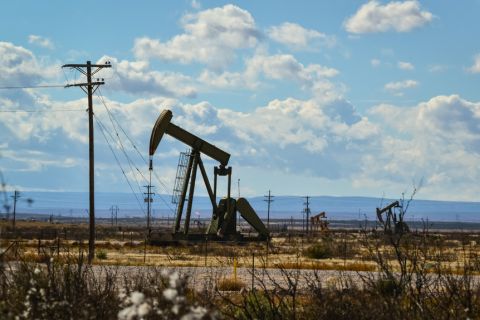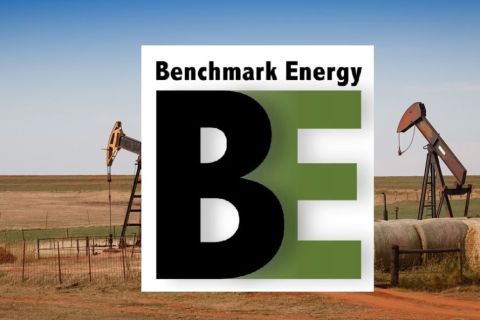The last few years after Macondo have seen an increased focus on well integrity. From BP, where a new organization with sweeping powers for well integrity management reports directly to the CEO, to the wide variety of well integrity job titles in the industry today, the issue is high on the agenda for good reason.
A study on the Norwegian Continental Shelf by the Norwegian Petroleum Safety Authority (PSA), for example, found that every fifth well analyzed had well integrity weaknesses. In addition, Society of Petroleum Engineers Paper 142075 presented in 2011 found that 45% of Gulf of Mexico (GoM) wells had sustained casing pressure.
Similarly, just as the industry is ramping up its well integrity capabilities, so is regulatory scrutiny increasing with organizations such as the Bureau of Safety and Environmental Enforcement (BSEE) in the GoM and PSA, which are putting in place strict requirements.

FIGURE 1. Meta’s morphing tool uses pressure to shape metal downhole to provide zonal isolation and liner tieback and replace damaged casing. (Images courtesy of Meta)
Yet despite this increased interest, well integrity is still addressed too often as a reactive process. This approach can lead to rising costs, lost production, and deviations to original drilling and production plans.
There is a need for a new approach to well integrity, a need for the adoption of new technologies that address previous limitations and restrictions, and a need to consider known trouble zones ahead of time. One technology and method that is a catalyst for this change is Metalmorphology, a proven technology patented by Meta.
This technique uses hydraulic pressure to “morph” steel cladding (Figure 1) to fit the circumference of the open hole or the inside surface of the casing, liner, or tubing wall. The tools can be run on coiled tubing, drillpipe, and wireline, depending on well parameters. Metalmorphology shapes the cladding to create durable gas-tight axial-load-bearing metal-to-metal isolation solutions. The technique uses established metalworking principles to balance the mechanical strength of steel and its alloys in isolation solutions that morph metal together.
Well architecture integrity
High-quality well architecture along with strong structural and casing integrity is a vital platform for the future success and profitability of a well. Operators today, for example, are looking for strong liner-tieback interfaces with no reduction in internal diameter (ID) and the ability to connect the liner to a tieback string of casing. This can be important in avoiding tying liners back to the surface for as long as possible during the drilling process so that larger wellbore and annulus diameters are maintained in the well and equivalent circulation density (ECD) pressures are minimized. A strong and flexible liner-tieback interface also can help operators recomplete existing producing wells with minimum change to well architecture to comply with new legislation.
Meta has developed a V0 ISO14310 certified liner-tieback system where the connection is made by morphing the tieback casing into a tieback receptacle to form a fully compliant life-of-well connection with no reductions in ID and no need for perishable items such as elastomers.
Well architectures in deepwater fields became more complex and challenging following the Macondo disaster. BSEE regulations have made it necessary for operators to alter well designs and strengthen their well architectures to show compliance in safety and environmental procedures.
One operator in the GoM, for example, is incorporating the Meta Liner Tieback into its well architecture. This will enable Shell to plan and deal with worst-case discharge scenarios, ensure that its well integrity is fully compliant with BSEE, overcome limited IDs in casing strings to achieve high load-bearing capabilities, and allow asset teams to plan to drill deeper.
Replacing damaged casing
The ability to replace damaged casing or recover from stuck casing, avoid costly sidetracks and lengthy fishing operations, and enable an operator to continue the original drilling program is being achieved with Metalmorphology.
In this case, Meta’s Casing Reconnect solution allows operators to recover the original stuck casing or cut damaged casing at the desired point, deploy a new casing string, and reconnect this to existing casing using the metal-to-metal sealing technology.
In one recent example, a North Sea operator discovered that the seal face for the tubing hanger in the wellhead was damaged and could not be used. The only way to replace the seal face was to replace the entire wellhead, which would involve cutting the old wellhead and attaching a new one to the existing casing.
The space-out flexibility and high axial-load-bearing metal-to-metal sealing features of the casing reconnect system allowed the operator to reinstate full integrity without the time and cost of procuring a specialized wellhead. The morph created a permanent fullbore connection capable of withstanding more than 1 MMlb of axial loading and provided a metal-to-metal V0 gas-tight seal. Therefore, existing well architecture was able to be reused, and the operator was able to continue on its original drilling plan.

FIGURE 2. Rigorous testing ensures all products can operate in demanding downhole conditions.
Zonal, annular isolation during completion
Effective zonal and annular isolation between casing strings is crucial to successful completions today. Operators face significant challenges, including complications that deeper, higher pressure wells present.
Metalmorphology can provide durable and reliable isolation barriers for the lifetime of the well, allowing the operator to proactively plan for zonal and annular integrity. The technology enables the isolation solutions to morph and set as required with the metal barrier resistant to any degradation from produced fluids. The contact force also is maintained in the most challenging gas production and injection environments.
Meta’s isolation barrier solution is used to replace cement in complex multilateral and horizontal reservoir liners without rendering the sliding sleeves inoperable as in the case of cemented completions. The barrier is morphed to the exact shape of the formation, providing zonal isolation for pressures up to 15,000 psi and proactive planning of zonal and annular integrity.
Well integrity in producing wells
Protecting well integrity during production and ensuring that independent zones are generating at maximum output is one of the biggest challenges operators face. Obstacles include ID restrictions that limit the size of intervention tools and the inability to isolate well zones or fix leaks in the tubing further down the well. If a zone below a previous isolation waters out, for example, there may be nothing that can be done to close it off.
Meta has developed an internal clad-through-clad system deployable on wireline. A second clad is run through the ID of a previously set internal clad of the same dimension. The second clad creates robust gas-tight connections with compliant metal contact across the length of the first clad, optimizing the dimensions. The clad-through-clad system enables the operator to rapidly reinstate well integrity when challenges occur and allow independent zones lower down the well to continue to produce.
Proactive approach to well integrity
Metalmorphology today can be applied across the well life cycle. It can help operators establish structural and casing integrity, put in place robust zonal and annular integrity during completions, and ensure profitable and productive wells. Most importantly, however, well integrity can be planned for, and preexisting technology limitations can be overcome. The result will be reduced risk, the protection and maximization of future production, and profitable and productive wells.
Recommended Reading
Novo II Reloads, Aims for Delaware Deals After $1.5B Exit Last Year
2024-04-24 - After Novo I sold its Delaware Basin position for $1.5 billion last year, Novo Oil & Gas II is reloading with EnCap backing and aiming for more Delaware deals.
EIA: Permian, Bakken Associated Gas Growth Pressures NatGas Producers
2024-04-18 - Near-record associated gas volumes from U.S. oil basins continue to put pressure on dry gas producers, which are curtailing output and cutting rigs.
Benchmark Closes Anadarko Deal, Hunts for More M&A
2024-04-17 - Benchmark Energy II closed a $145 million acquisition of western Anadarko Basin assets—and the company is hunting for more low-decline, mature assets to acquire.
‘Monster’ Gas: Aethon’s 16,000-foot Dive in Haynesville West
2024-04-09 - Aethon Energy’s COO described challenges in the far western Haynesville stepout, while other operators opened their books on the latest in the legacy Haynesville at Hart Energy’s DUG GAS+ Conference and Expo in Shreveport, Louisiana.




